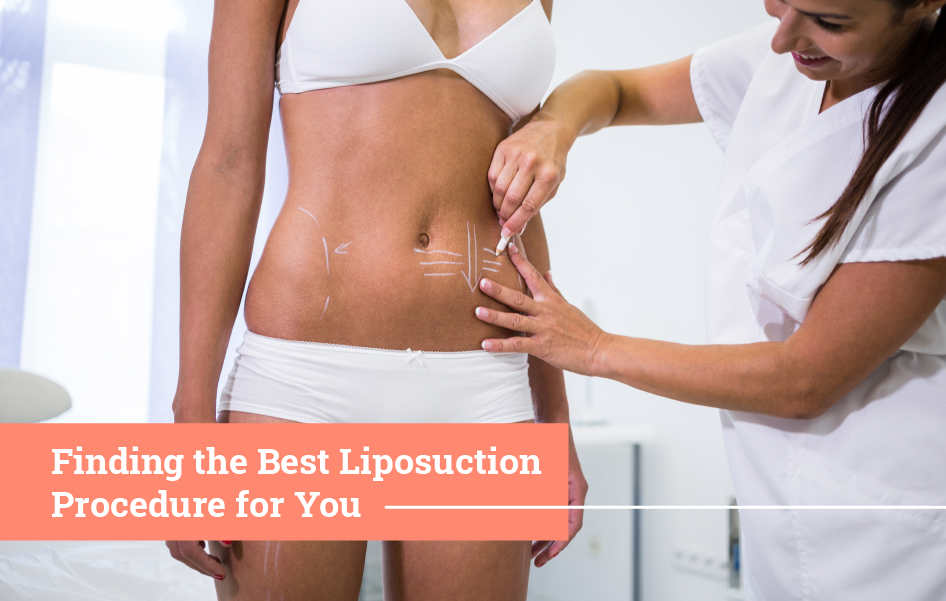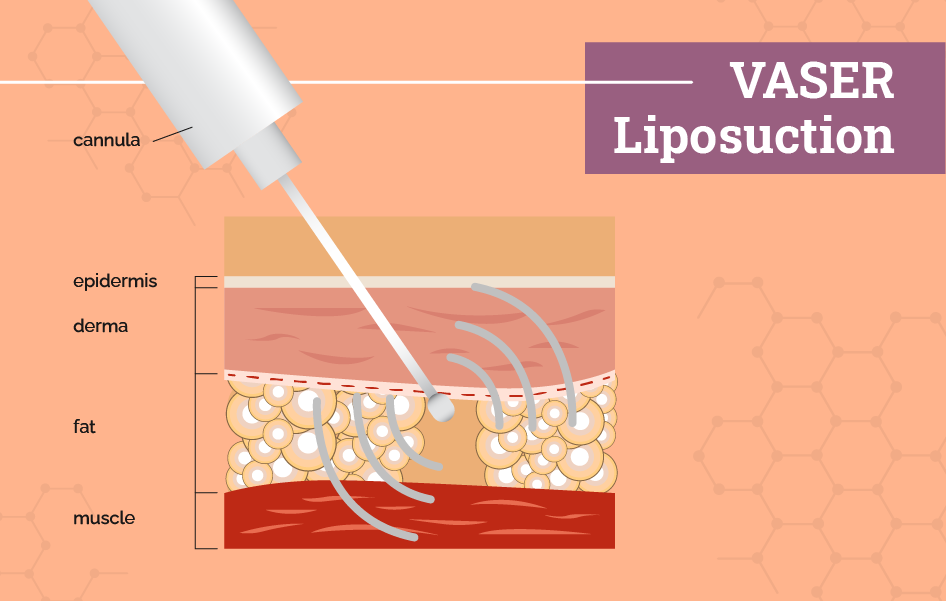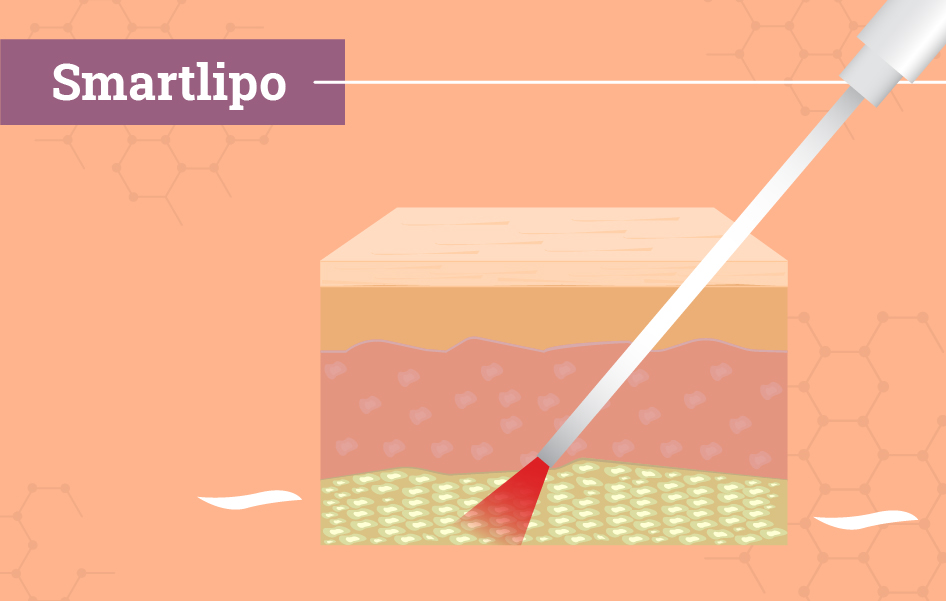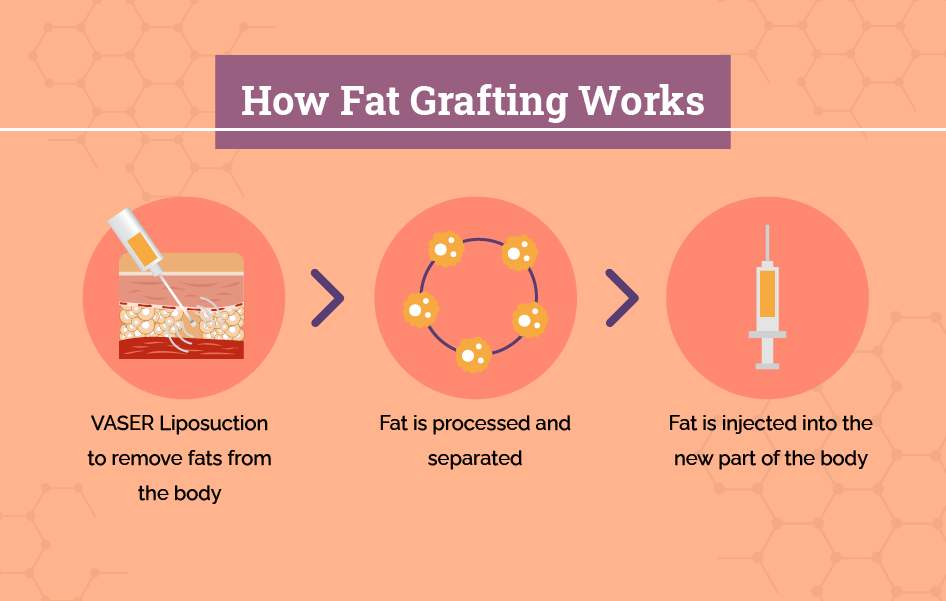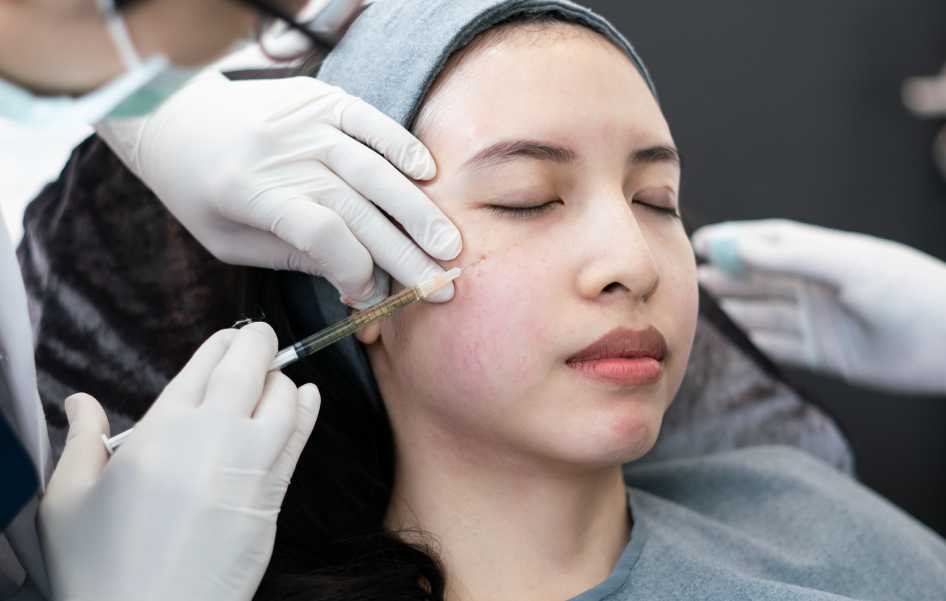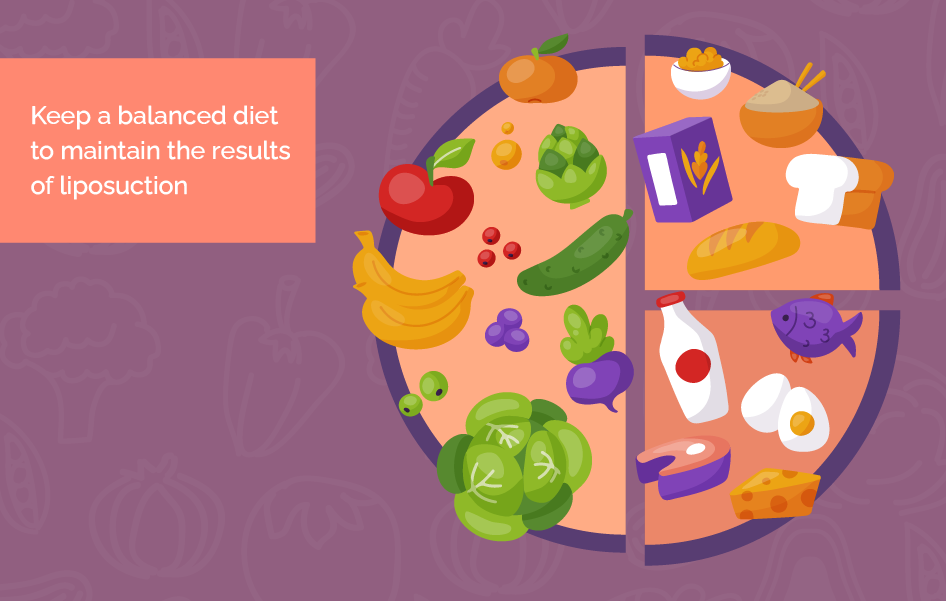Everything you need to know about Liposuction in Singapore
What is liposuction?
Liposuction is the surgical procedure of removing fat cells from the body. Fat deposits are extracted through a tiny hole in the skin and using a thin cannula. The objective being to shape and contour the treated area.
As a treatment, liposuction is particularly useful to sculpt areas on the body or the face that are disproportionate. Areas like the saddlebags, the love handles or belly that are not in sync with the rest of the body shape can be treated with liposuction. The aim is so that the body’s curves to flow better and achieve better harmony with the rest of the body.
Vaser Liposuction, Vaser HD, Smartlipo and traditional liposuction are various forms of liposuction techniques, each with its own advantages. Which we will discuss below.
Liposuction itself cannot fully remove cellulite from under the skin nor is it a solution for weight loss or obesity.
Who is suitable for Liposuction?

Anyone who has an area that is out of proportion with the rest of the body can benefit from liposuction. Stubborn fats as they are commonly called, as areas that will not “move” no matter how much exercising and diet one undergoes. These areas can be effectively removed by liposuction.
It is a misconception that only slim fit individuals can benefit from liposuction. Even somewhat obese individuals, as long as there are areas of disproportion, can benefit too.
However, not to be mistaken, liposuction does not help with weight loss or obesity perse. It only sculpts and contours specific areas. Obese individuals will still have to work at it from dieting and exercising in order to achieve not only a better figure, but better general health.
Some patients who are generally obese may actually benefit from some advice from dieticians and exercise physicians. There are medications nowadays that can very effectively bring about weight reduction without many of the side effects with the older slimming pills. Saxenda®, a type of peptide called GLP1, is one example. And if medications fail, there is the option of a bariatric surgeon referral for Ellipse balloon or sleeve gastrectomy.
However if liposuction is clinically indicated, the patient needs to be healthy enough for the surgery. And they generally are, because for patients who have chronic illnesses like heart problems or chronic diabetes, liposuction would be the last thing on their minds. The patient group that presents for liposuction is “self-selecting” in a sense. However, most liposuction practitioners would watch out for such chronic illnesses.
WhatsApp +65 9153 1503 , call us +65 6733 5300, or sending us an email here.
Which body parts can you do liposuction on?
The saddlebags (outer thighs in some women), the love handles (the lower flanks which sometimes called muffin tops) and the belly are common areas for liposuction. But almost anywhere, from face down to ankle can be contoured using liposuction methods. Skin elasticity is an important consideration.
With good skin elasticity, your skin will contour nicely to your new body shape after the procedure.
Will I have Loose Skin After Liposuction?
Talking about Skin Elasticity, there are several methods which can tighten potentially loose skin during a liposuction procedure. These are added steps during the liposuction procedure. Energy in the form of plasma (Renuvion) from activated helium, or heat from radiofrequency (BodyTite), are delivered through the liposuction incisions to tighten the overlying skin. These technologies have built-in safety mechanisms to avoid overheating or injuring the skin they are supposed to tighten. These skin tightening procedures are useful in areas where loose skin commonly occurs, like in the belly, the underside of the arms and the inner thighs. Read more about these added steps to prevent loose skin after Liposuction. And also about a mildly invasive treatment like Facetite that tightens and sculpts the skin of the lower face and neck, either with or without liposuction.
WhatsApp +65 9153 1503 , call us +65 6733 5300, or sending us an email here.

How much weight can I lose with liposuction?
If you’re looking at liposuction to lose weight, you’re looking in the wrong direction.
With large-area liposuction, you generally lose up to 1-2 kg of weight at a maximum. A more realistic expectation from liposuction is that you can get a particular part of your body sculpted so that the body’s curve flow in better harmony. And then you should be more motivated to gym or workout to improve on your figure.
Motivation is very important for the long haul. Maintaining your weight within a stable band (less than 5% fluctuation) is very important to prevent fat redistribution. Particularly after large area liposuction, the body will have a natural tendency to deposit the fat into another area. This redistribution can be anywhere including in the visceral fat deposits.
Fat redistribution will not occur if you do not, over the years, put on a lot of weight after liposuction.
WhatsApp +65 9153 1503 , call us +65 6733 5300, or sending us an email here.
What can I expect when I go for liposuction?
Depending on the area to be treated the liposuction procedure can vary from a 10-minute minor-procedure done in the clinic under local anaesthesia, to a 2-hour procedure in day surgery performed under sedation by an anaesthetist. Here’s what you can expect.
The Liposuction Consultation
A consultation is important determine if you are suitable for the procedure or not. Obvious contraindications like health conditions aside, there are important considerations that need to be discussed.
One important consideration is the quality of the skin over the area to be treatment. Most surgeons can accurately estimate if there would or would not be any loose skin following a debulking procedure like liposuction. And sometimes, the trick may be to debulk less to avoid loose skin. All this may be discussed with the patient.
Another consideration is the extent of the procedure. In other words how many areas we can safely include in one session. Even if performed under sedation or general anaesthesia, the liposuction area needs to be pre-infused with a tumescent solution to reduce bleeding during suction. And there is a safety limit to how much tumescent solution can be infused in a session of liposuction. Most surgeon will be able to combine one large area like the abdomen or thighs with another small area like the arms in one session of liposuction.
And then everything else from the recovery process to what can realistically be expected after liposuction should also be discussed with the patient.
The Liposuction procedure itself

The first step in a liposuction procedure is the infusion of tumescent solution, which acts as an anaesthetic as well as reduces bleeding during liposuction. Depending on the type of liposuction used, some form of energy may be applied to loosen up the fat deposits. This may be in the form of high frequency ultrasound energy in Vaser assisted liposuction, vibrations in Microaire or water pressure in water-jet liposuction. However, very often the fat is soft and loose enough to be sucked out without the added step of “power-assisted” liposuction.
And then suction of the fat. The surgeon will determine the point at when the intended sculpting and contouring is achieved.
Patients will rest in the recovery area of the day surgery until the effects of the sedation are wearing off. Meanwhile, nurses help the patient put on the compression garment.
Patients then go home to rest.
WhatsApp +65 9153 1503 , call us +65 6733 5300, or sending us an email here.
Liposuction recovery
There are of course individual variations, but generally recovery is a breeze after liposuction. Swelling and bruising is to be expected, but they are not debilitating. Most patients are mobile and active the very next day after the liposuction.
The swelling starts at around the second day progressively getting worse peaking at the 4th-5th day post op. This is where the compression garment comes in very handy to reign in the swelling and provide maximum comfort. After the 5th day, the swelling should be on the way down naturally and the compression garment becomes quite optional after the second week.
Some residual swelling may persist for up to a few months.
Recovery Timeline
For 2 to 5 days after surgery, and when the swelling is on its way up, you might experience some discomfort and soreness. This is where the compression garment is most needed. In fact it is a total misconception that the compression garment will change the final outcome. It doesn’t. But it sure does reduce the discomfort in the first few days after liposuction. Some surgeons might insert drains to remove fluid and blood accumulations from the treated areas. In which case you may have to limit your movements in case the drains slip off. But otherwise you can go about most light activities as normal. Like perhaps going to the supermarket or driving your kids to school, you should not have any problems.
In 1 to 2 weeks, the pain usually the swelling should be on the way down and every day that passes, it gets more and more comfortable. Compression garment can still be worn, but it gets pretty optional by now. Some clinics that specialize in liposuction may even offer RF treatments to hasten the resolution of swelling. If your job is physically demanding, take more time off to recover.
By weeks 2 to 4, the compression garment is pretty optional by now and most patients can consider some serious exercising. But always listen to your body. Don’t push if the is pain or discomfort. The healing process differs naturally, from person to person.
Finally, in about the 6th week after surgery, bruising should have subsided completely, though you may still experience slight swelling. You could say that you are just about being “bikini-ready” here at one month onwards.
WhatsApp +65 9153 1503 , call us +65 6733 5300, or sending us an email here.
Liposuction risks
The liposuction procedure has evolved over the years to become a very safe and predictable. Mitigating all the risks is the task of a well trained and experienced practitioner of liposuction. Teamwork (anaesthetists and technicians) are crucial for a good outcome. Instruments and all the devices involved in the surgery have been repeated refined over the years to bring about an even higher level of safety.
But as with any surgery, liposuction procedures come with certain risks and potential complications. Some possible side-effects and complications involved in liposuction surgery are:
- Anaesthesia risks – make sure is deeper sedation is administered, an anaesthetist is present to monitor and administer the sedation.
- Irregular skin contours or pigmentation – if fat is removed unevenly, the skin has poor elasticity, or the cannula causes damage to the area beneath your skin, your skin may permanently appear bumpy or irregular. Prevention is still best and it comes with experience not to push too far in removing too much fat.
- Fluid accumulation – Lymphedema happens when lymphatic fluids may accumulate under the skin from localised disruption of lymphatic flow. This is usually self limiting.
- Numbness – temporary or permanent changes to skin sensation may occur due to neuropraxia of the nerves in the areas treated. Modern methods and tools generally do not cause this.
- Damage to internal structures – Accidental puncture the internal organs have happened before albeit very rarely. As well as damage to the blood vessels, nerves or muscles. The tools are designed not to damage internal structures by default. A good amount of tactile feedback to the hand of the surgeon actually mitigates to a large extent.
- Infection – skin infection may sometimes occur.
- Poor recovery – persistent swelling or poor wound healing may occur
Liposuction surgeries have a total of approximately 5% complication rate, with most complications being minor. Speak to your surgeon to understand more about such preventable risks.
WhatsApp +65 9153 1503 , call us +65 6733 5300, or sending us an email here.
How much does it cost to do liposuction in Singapore?
There are various components to the cost of liposuction. There is the surgeon’s fees, the anaesthetist fees, the rental charges for the day-surgery operating theatre, the compression garment, the discharge medications like antibiotics and analgesics, and the follow-ups.
If there is fat grafting, then there is also the consumable costs for separating out the nano-fat and structural fat. Your surgeon may charge you a fixed surgeon’s fee and then leave the other components variable. Some practices specializing in liposuction may charge a flat fee for the whole procedure, no matter how much operating theatre time is needed. The latter, ie. flat fee, is more common in Singapore.
In Singapore, small area liposuction of a single area ranges from $4,000 to $8,000, and multiple area liposuction can range from $8,000 to $30,000. All in. Here at David Loh Surgery, an aesthetic clinic in Singapore, we tend to charge the lower end of the range of liposuction costs in the country. Here’s our price list on everything including liposuction.
Finding the Right Liposuction Procedure for You
What is VASER Liposuction?
Vaser stands for Vibration Amplification of Sound Energy at Resonance and is a particular form of liposuction that has proven to be popular in the last 16 years.
Vaser Liposuction works by loosening fat deposits using ultrasonic energy so that they can be more easily extracted using the cannula suction. The ultrasound energy is delivered via a probe inserted under the skin. Only fat cells are selectively targeted, to cause them to loosen up. The blood vessels, muscles, connective tissues and other tissues are not affected by the Vaser ultrasound energy.
This fact alone does not make Vaser the best form of liposuction as claimed by many doctors online. Any form of liposuction is only as good as the surgeon’s skill, technique and experience. Some surgeons are world renown in liposuction, but do not use Vaser. They achieve great work with for example only syringe liposuction, or what is also commonly referred to as conventional liposuction. And the converse is also true. Do take note of this.
High definition Vaser Liposelection or Vaser HD is a variation of Vaser Liposuction that works by sculpting fat deposits into muscular shapes. Or else, the fat layer under the skin is thinned out more than usual so that it becomes easier to see the underlying muscle shapes. The cost of undergoing Vaser HD ranges from about S$8,000 – $12,000 at our clinic in Singapore. See our price list.
What is Smartlipo?
Smartlipo is another liposuction technique commonly used to remove fat from smaller areas like under the chin or cheeks.
A fibre optic laser is inserted into the skin to reach fat layers. The frequency at which the Smartlipo laser is fired disrupts the membranes of the fat cells. The destroyed fat cells are then moped up by macrophages (white blood cells) to be processed in the liver and excreted through your stools. The technique is minimally invasive because it does not require inserting a cannula to vacuum up fat cells – rather the fat cells are cleared naturally through biological processes initiated inside your body.
Difference between Vaser, Smartlipo and “Traditional” Liposuction
The added step between tumescent anaesthesia and suction in Vaser and Smartlipo makes them so called “power-assisted” methods of liposuction. Whereas in traditional liposuction, also known as the conventional liposuction, there isn’t the additional step to loosen up the fat deposits before suction.
Whatever method, they are all invented with the objective of removing fat deposits from under the skin to sculpt and contour areas of the body. And the best method is not in the technology, but the skill and experience of the surgeon.
Traditional Liposuction
Traditional or conventional liposuction removes fat manually through the cannula without first dispersing fat cells. This procedure breaks up fat cell deposits using repetitive movements and suction pressure to suck out fats through the cannula. The cannula is moved back and forth by the surgeon to break up the fatty layer.
You could say a considerable amount of “elbow grease” is involved. Hence power assisted methods like Vaser or Smartlipo were invented to make life easier for surgeons.
But in actual fact for surgeons who do liposuction often, the act of performing liposuction is like playing a violin in an orchestra, a joy and a sense of achievement, rather than a chore. With or without power-assisted methods.
Vaser Liposuction or Smartlipo
This is like comparing apples and oranges. Vaser is very efficient at removing fat from large areas like the abdomen and the thighs. Smartlipo delicately removes fat from very small areas like under the chin, the cheeks and the so-called “bra-strap” fats.
Their indications are quite different, but of course the objective is the same. Being to sculpt and contour a certain part of the body.
WhatsApp +65 9153 1503 , call us +65 6733 5300, or sending us an email here.
What is fat grafting?
Fat grafting, also known as fat transfer or lipofilling, involves transplanting fat from one part of your body to another part for enhancement or volume replacement. Common areas for augmentation with fat grafting include the cheeks, breasts, buttock, and hands.
 The benefit of fat grafting over other fillers or implants is that it uses tissue from your own body (autologous fat), which completely avoids the issue of rejection.
The benefit of fat grafting over other fillers or implants is that it uses tissue from your own body (autologous fat), which completely avoids the issue of rejection.
What is the fat grafting procedure like?
The first step of fat grafting is a liposuction procedure to harvest fat cells that will be used as the “filler material”. Depending on where the augmentation area is, the amount of fat required would be quite different. It could, for example, be a mini-liposuction of a palm-sized area for fat grafting to the face. Less than 100mls would often be enough. Or it would require a liposuction of a large area like the abdomen or the thighs in the case of fat grafting to the breasts or buttocks.
After the fat is harvested, the fat cells are cleaned and filtered. The filtration process yields various fractions of fat. Some of the larger fat particles are intended for structural augmentation, while the smallest ones are intended for the stem-cell like effects on the skin. These are the stromal vascular fraction (SVF) or the nano-fats.
The fats are then decanted into syringes ready to be re-injected into the various sites where augmentation was intended. The fat grafting procedure is done immediately after filtration. Liposuction-specialised practices do not store the extracted fat for use another day. There are however stem cell banks that can store adipose-derived-stem-cells, or mesenchymal-stem-cells (MSCs) as they are also called, use at a later date. Even up to many years later.
Although there are no clinically approved use for MSC at the moment, there are therapeutic applications on the horizon with promising results for the treatment of diseased organs.
Read more about Mesenchymal Stem Cell banking.
WhatsApp +65 9153 1503 , call us +65 6733 5300, or sending us an email here.
Who is suitable for fat grafting?
First and foremost there must be enough fat to harvest through a liposuction procedure. For fat grafting to the face, this is not so important as a consideration because the amounts needed are not so much. For fat grafting to the breasts or the buttocks, 500mls or more of fat may be needed. And most thin individuals do not have that much spare fat.
If the fat is available, autologous fat (own fat) is a very good filler material for people who wish to enhance their breasts or buttocks, lift their cheeks or perform enhancements to other parts of their body. The nano-fats can also be used to treat wrinkles or scars from previous surgery or injury.
Patients do need to moderate their expectations as to how much of any increase in breast size they can achieve with fat transfers. For significant improvements in breast cup sizes, like C or D cups, breast implants are still the better option. Fat transfer to the breasts can increase perhaps one cup size at most, and is best observed in petite individuals whose starting point is an A cup.
Breast cancer survivors in Singapore who have undergone partial or full mastectomy sometimes choose to undergo the fat grafting procedure to replace volume in their breast.
WhatsApp +65 9153 1503 , call us +65 6733 5300, or sending us an email here.
Keeping well with Liposuction
How can I prepare myself for liposuction?
Take note of some things that you can do to prepare yourself for the liposuction surgery in the days leading up to it:
- Do not eat or drink anything in the morning of your procedure (after midnight the previous day) to prepare your body for anaesthesia
- Do not shave, especially the areas that will be undergoing treatment, to prevent irritations or ingrown hairs that may cause infections
- Do not apply moisturisers, makeup, sunscreen etc. to your body before you go for surgery because the areas undergoing treatment should be chemical-free.
- Wear loose and comfortable clothing to and from the clinic to minimise irritation after the surgery
- Arrange for somebody to pick you up or be prepared to call a taxi home after the procedure as you should not drive after being under anaesthesia
- Stay active and mobile during the recovery period. This will help the swelling dissipate faster.
How do I maintain results after liposuction surgery in the long-run?
Liposuction can do wonders for your body, making you feel good and confident about yourself. However, your body will continue to gain and lose fats based on your exercise, diet and lifestyle – just like it ordinarily would before liposuction. To maintain the results of your newly-shaped body, you have to keep with a healthy diet and lifestyle in the long-term. Feeling good about yourself does not just depend on how your body looks, but how you feel inside too – and staying healthy is one great way to do that!
1. Eat healthy
To first recover well from liposuction surgery, eat foods that are low in sodium and salt, and high in vitamins, antioxidants and other nutrients. Some best foods to take during post-surgery recovery are celery, grapefruits, watermelon and strawberries. Altering your diet, especially in the few months after surgery will boost your body’s immune system and help you to recover better and faster. You should also increase your protein intake to help with muscle and skin recovery.
Even after you have fully recovered from the liposuction procedure, continue to keep a healthy and balanced diet daily! In Singapore, a healthy diet should include half a plate of fruits and vegetables, a quarter of whole grains such as brown rice or wholemeal bread, and a quarter of meat, seafood, eggs, and low-fat dairy products. Eat more smaller portioned meals rather than a few big meals.
Munching healthy, delicious foods will make a huge difference to your body’s health and help you to maintain the results of liposuction.
2. Exercise Regularly
Adults in Singapore are recommended to engage in moderate-intensity physical activity at least 150 minutes every week. Some simple exercises that you can do in your home are marching in a stationary position, sitting down and standing up from a chair, doing leg raises to the side and back and doing arm stretches.

Of course, you can adjust the intensity and difficulty of your exercise according to how well you can cope with it. After the surgery, you should limit your physical activity until about week 3 to 5, and under the advice of your surgeon. Once you are given the go-ahead, incorporate exercise into your daily routine!
3. Drink plenty of water
Drinking plenty of water is important to prevent dehydration after your liposuction surgery. Adults in Singapore should drink at least 8 glasses of water a day, but in the post-surgery recovery stage, you should increase this water intake to about 10 to 12 glasses of water a day. When you have fully recovered, continue to properly hydrate yourself. Water helps to boost metabolism, aid digestion and even maintain your energy level throughout the day.
With reasonable expectations about liposuction results in the long-run, you can be happier and healthier after a procedure!
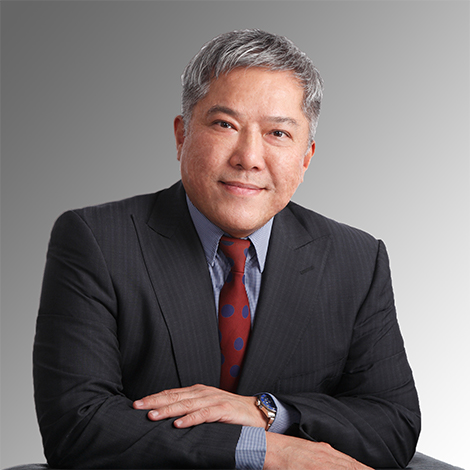
Conclusion
Overall, liposuction can be a smooth and efficient process to boost your confidence and health in the long run if you get the best advice and undergo the best liposuction procedures suitable for your body. To mentally prepare for liposuction, read up, book a consultation at the aesthetic clinic, ask questions – and everything will flow after that. Embark on your liposuction journey with us!
David Loh Surgery is an established aesthetic clinic in Singapore providing liposuction services since 2006, . Book a consultation with us. WhatsApp +65 9153 1503 , Call us +65 6733 5300, or sending us an email here.





